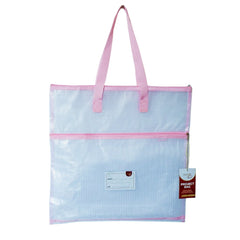Beginning Quilting - Flying Geese
Welcome to the next lesson in our series on Beginning Quilting. Now that you have learned the basics of Rotary Cutting with Strip Piecing, Making Nine Patch Blocks, and practiced your Half Square Triangles, it is time to get a bit more advanced. This time we make flying geese. Some people call this a ‘no waste’ method, but I tend to have a little bit of trim to ensure that the geese are accurate in size and precise in point location at 1/4-inch inside the raw edge. Remember, accuracy is the key to having your geese points sharp, your seams line up, and your quilting being fun and not frustrating.
For each set of four geese, you’ll need one large square and four smaller background squares. To figure out the sizes of squares, you need to know the unfinished size of the geese you want to make. Your large square should be the unfinished width + 1-1/4-inches, and the small squares should be the unfinished height + 7/8-inch.
For this example, I want my final flying geese to be 2-1/2 x 4-1/2 inches unfinished, which would then finish at 2x4-inches after sewing into the project. I cut one large 5-3/4-inch scrappy square (4-1/2 + 1-1/4) and four 3-3/8-inch (2-1/2 + 7/8) background squares. On the back of your 3-3/8-inch background squares, draw diagonal lines from corner to corner. I like to draw two lines (as I showed on the Half Square Triangles lesson) 1/4-inch away from the center using the lines on a ruler.
Draw two lines, 1/4-inch away from the center on both sides.
Place one background square on the corner of your larger focus fabric square with the diagonal lines pointing to the center.
Add another background square to the opposite corner with the lines touching.
Pin in place. Put the #29 Open Toe foot from your Madam Sew Ultimate Presser Foot Set on your machine. Sew on the lines across both background squares.
Sew across both background squares in one continuous line. When you get to the end, place the next one up against the first one, and continue sewing across the small gap.
Cut apart down the center, leaving a 1/4-inch seam allowance.
Press the background triangles up, forming a heart shape.
Place the remaining two background squares on the sewn units on the remaining corner, with the lines running up between the top triangles.
Note that your lines will intersect with the point where the squares meet.
Sew on the lines, again chain piecing all the units.
Cut apart in the center, again leaving a 1/4-inch seam allowance.
Press up, forming the flying geese. Next, I'll show you how to trim them. Using a square up ruler, place the diagonal line along the edge of the goose, placing the 2-1/4-inch point at the goose point. This will give you a 1/4-inch seam allowance below the point. Trim the side and top. Now, turn the goose around and place the bottom on the 2-1/2-inch line and the side on the 4-1/2-inch line. Trim the top and right side.
For those who do not have a square up ruler, you can use any ruler with a 45-degree line, like this small square ruler. Simply begin with placing that line on the edge of the goose and the bottom of the ruler 1/4-inch down from the goose point.
Mark a line across the bottom of the ruler so you’ll have a straight reference for cutting.
Turn the unit so you can place a cutting ruler on the line all the way across the unit, and trim to the line.
Turn the unit around and trim to 2-1/2-inches with your rotary cutter.
Now place the point of the goose at the halfway point on the ruler. In our example, this would be at the 2-1/4-inch point as our geese will be 4-1/2-inches wide. Trim the right edge.
Turn the unit around and finish trimming at 4-1/2-inches wide.
Each set of one large and four small squares will yield four flying geese.
Cutting and trimming with precision means when you join the geese together, your points will be sharp. When sewing them together, be sure to sew with the point of the goose on top so you can see the ‘X’ created by the piecing.
Sewing through the point of the ‘X’ will give you perfect points, just like it did with the Half Square Triangles.
Press the seams to one side, or open.
Practice by making a lot of geese. You can put them together in pairs as part of a block design, or make long rows for border interest in your quilts.
In future posts, we will take the elements we are learning in Beginning Quilting and put them together in so many ways, you’ll have more patterns than you can sew in a lifetime!
Happy Quilting!
Carole
See my blog at FromMyCarolinaHome.com for more ideas, quilt alongs and free patterns.
















